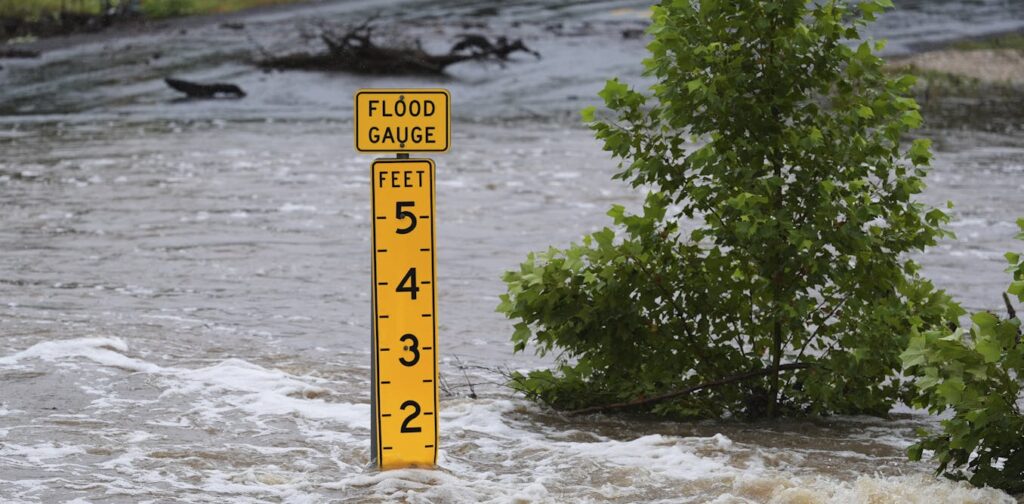
Why it can be hard to warn people about dangers like floods – communication researchers explain the role of human behavior
Title: The Human Factor: Why Warning People About Flood Dangers Can Be Challenging
When flash floods engulfed the Texas Hill Country, leaving a trail of destruction in their wake, the inadequacy of technology in warning people about such catastrophic events came to the fore. Despite the advances in meteorology and predictive technology, the death toll continues to rise, with many attributing this to human behavior.
According to communication researchers, although warning systems have significantly improved, their effectiveness is often hampered by human attitudes, beliefs, and behaviors. Understanding this human factor is thus crucial in devising strategies to improve the response to flood warnings.
“Technology has undoubtedly revolutionized our capacity to predict and warn against floods,” says Dr. Jason Samenow, a leading communication researcher. “However, the human element cannot be discounted. How people perceive, interpret, and respond to these warnings is what ultimately determines their effectiveness.”
Several studies highlight the complex interplay between human behavior and the response to flood warnings. One study conducted by the National Center for Atmospheric Research found that people often underestimate the risk of floods, leading to delayed or non-existent evacuation. This misjudgment is attributed to factors such as lack of previous experience with floods, an erroneous belief that built structures are safe, and a general dismissal of the severity of the situation.
Acknowledging this, Dr. Samenow explains, “Our brains are not wired to respond quickly to distant, abstract threats. This is especially true for floods – a slow-onset disaster. Without an immediate, tangible threat, people are likely to downplay the risk and delay action.”
Another factor is the ‘cry wolf’ effect, where people become desensitized to repeated warnings that do not result in disaster. This phenomenon has led to complacency, with people ignoring subsequent alerts, exacerbating the problem.
“Repeated false alarms can erode trust in warning systems, leading people to disregard future alerts. It’s a significant challenge we face,” says Dr. Linda Bourque, a sociologist specializing in disaster response.
Moreover, communication barriers can hinder the effectiveness of flood warnings. These include language barriers, insufficient access to technology, and the lack of tailored messaging for vulnerable populations like the elderly, disabled, and those living in isolated regions.
“Effective communication is not just about the message itself, but also how it is delivered, and to whom,” says Dr. Bourque. “Ensuring that warnings are accessible, inclusive, and understandable can significantly improve response rates.”
Even the framing of the warning message can influence human behavior. Research indicates that warnings emphasizing potential losses, rather than focusing on protective actions, are more likely to prompt immediate action. Additionally, incorporating social elements, like urging people to protect their neighbors, can also enhance response rates.
“The way we frame our messaging matters,” says Dr. Samenow. “A warning that emphasizes the potential loss of life and property, and appeals to community responsibility, is more likely to elicit an urgent response.”
To tackle these challenges, researchers advocate for a multi-pronged approach that combines technological advancements with a deeper understanding of human behavior. This includes improving the accuracy of predictive models to reduce false alarms, tailoring warning messages to specific demographics, and employing behavioral science to enhance public understanding and response to flood risks.
Moreover, public education and awareness campaigns can play a pivotal role in changing attitudes towards flood risks. By promoting a culture of preparedness and understanding, these initiatives can help communities respond more effectively to flood warnings.
“As we continue to witness the devastating effects of floods, it’s clear that technology alone cannot save lives,” says Dr. Samenow. “We must delve deeper into the human factor, understanding and addressing the behaviors that hinder response to flood warnings.”
The recent floods in Texas have once again underscored the urgency of this issue. As climate change continues to exacerbate weather extremes, understanding and addressing the complexities of human behavior in the face of disaster warnings has never been more crucial.
